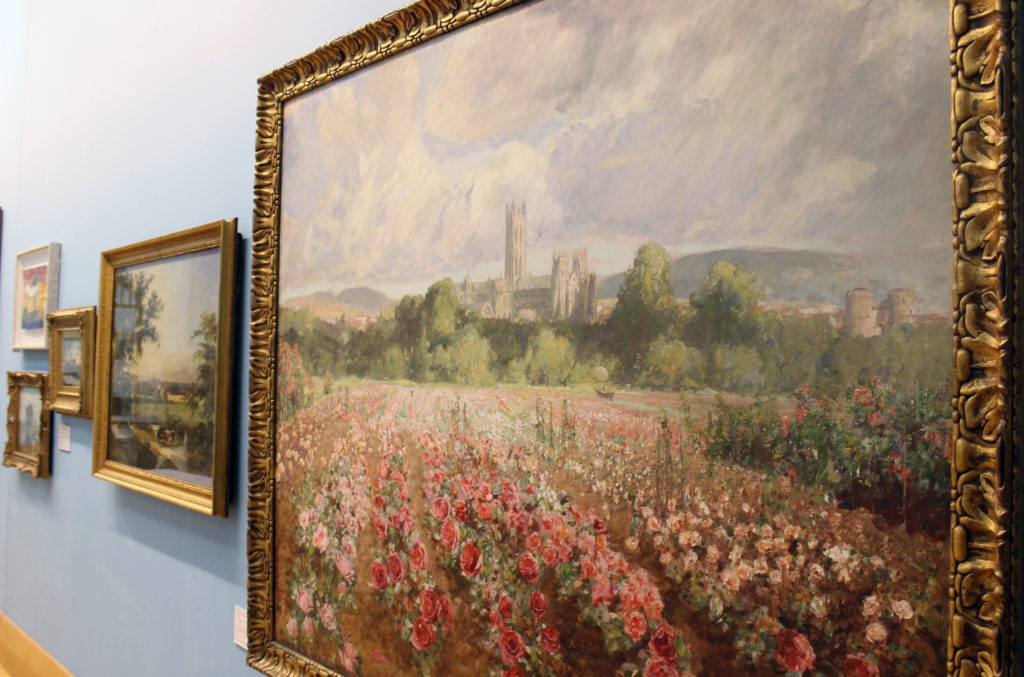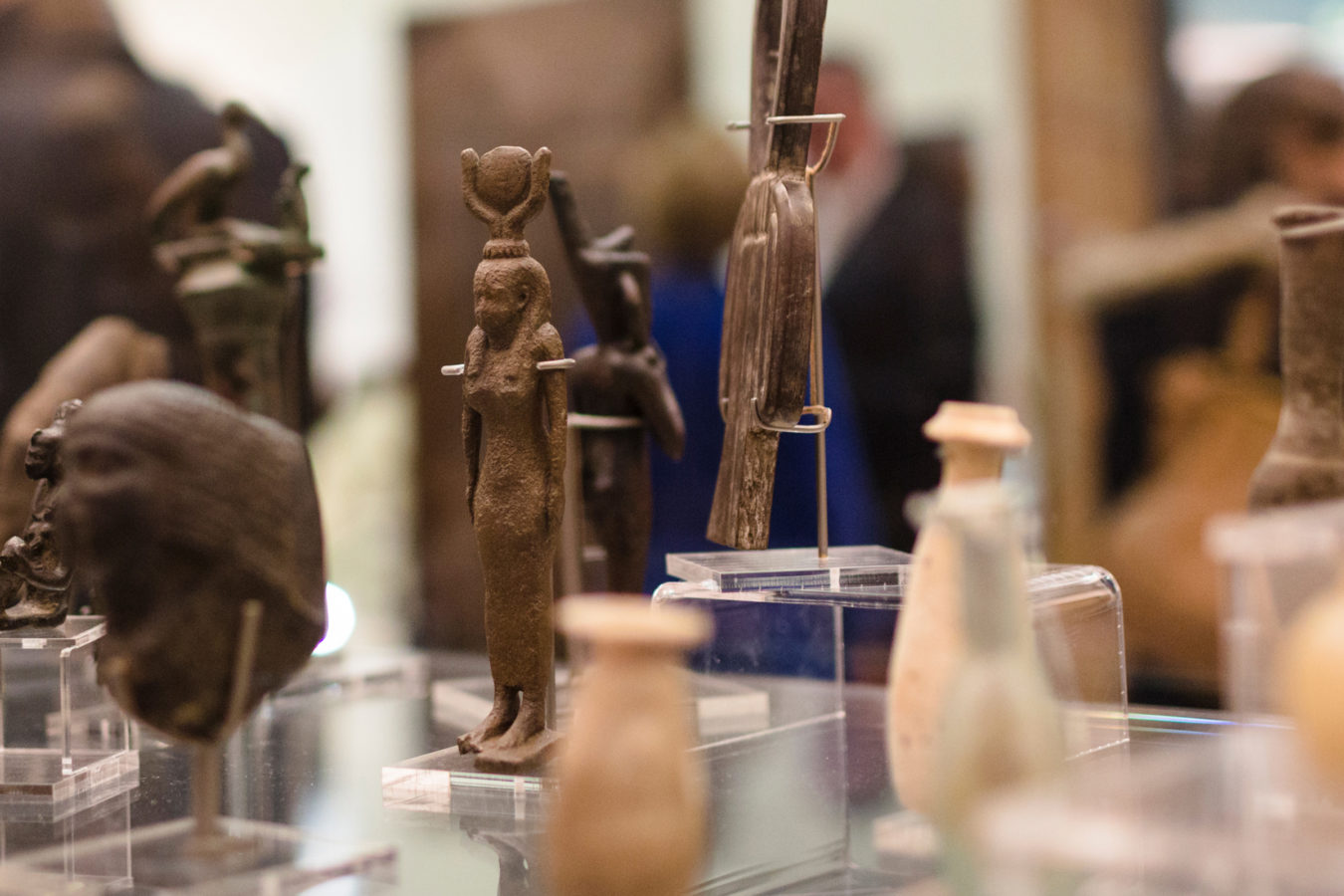
Easter fun at the museums!
Exhibitions, trails and activities; six fun things for all the family to enjoy at The Beaney and...
Gutter Apples was painted by British artist Ian Hunter (27th April 1939 – 1st March 2017), in oil paints on board and hangs in the People and Places gallery at The Beaney. It’s a piece that often captures the attention of visitors, exuding an air of mystery that leaves its admirers with more questions than answers! Let’s take a deep dive into the many meanings behind this Beaney favourite.
Perhaps most striking is the unusual composition of the painting, focusing on the lower half of two female figures instead of their faces. These mysterious figures are split in the middle, leaving the viewer searching for any clues or answers in the rest of the composition. It resembles an accidental but perfectly framed Polaroid snapshot.
Although we know it was painted in 1975, the piece has an almost timeless quality. The women’s clothing could indicate America in the 1950’s or 70’s, but we can’t be totally sure. As the viewer gazes at the disembodied legs of the women, it is hard not to notice the voyeuristic aspect of the image. Yet it appears from the confident, relaxed, and styled stance of the two women that they are aware they are being looked at.

You may be wondering what the apples, referenced within the scene and the title, could be symbolic of. Fruit, particularly apples, or vegetables are a recurring motif in Hunter’s work: in another of his paintings, depicting a woman’s nude upper body, he places two apples and a selection of vegetables on the table next to her – perhaps drawing connections between her body and the fruit. Likewise, in Gutter Apples there is an explicit focus on the female body, despite being clothed, with their only defining features being their legs.
The significance of the title, however, is not immediately apparent. The two green apples on the stool are cast in shadow compared to the two figures that flank them, but it is the apples that are given the central focus in the composition. The apples themselves are arranged in a similar way to the legs, with one in front and the other slightly behind and in shadow.
Could the title Gutter Apples have some negative connotations? Perhaps Hunter is implying that the women are lower in society, from ‘the gutter’, like dirty or spoiled fruit. Historically, fruit has featured in paintings as an allegory for human life as something perishable – representing the transient nature of life and youth. The apples in the painting are plump and ripe now but will soon decay, yet, as the title implies, they may not be so good to eat after all!
Explore more of The Beaney’s Collection online.
Written by Emma Williams, Museums Volunteer.
